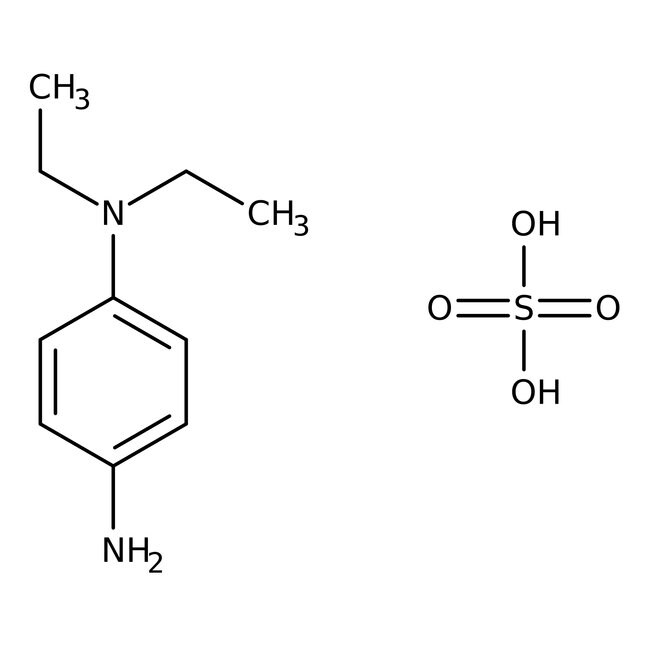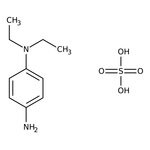Search Thermo Fisher Scientific
N,N-Diethyl-p-phenylenediamine sulfate, 97%, Thermo Scientific Chemicals



N,N-Diethyl-p-phenylenediamine sulfate, 97%, Thermo Scientific Chemicals
Chemical Identifiers
Specifications
Description
This Thermo Scientific Chemicals brand product was originally part of the Alfa Aesar product portfolio. Some documentation and label information may refer to the legacy brand. The original Alfa Aesar product / item code or SKU reference has not changed as a part of the brand transition to Thermo Scientific Chemicals.
N,N-Diethyl-p-phenylenediamine sulfate is used for the spectrophotometric determination of drugs such as salbutamol sulphate, ritodrine hydrochloride and isoxsuprine hydrochloride containing phenolic group. It is also used in the analysis of drugs like dapsone hydrochloride, sulfamethoxazole and sulfadiazine containing aromatic amino group. Further, it is used as a color developer and film developer in photography.
Solubility
Soluble in water and alcohol.
Notes
Light sensitive and air sensitive. Keep the container tightly closed in a dry and well-ventilated place. Incompatible with strong oxidizing agents.
Figures
Documents & Downloads
Certificates
Frequently asked questions (FAQs)
Citations & References
Safety and Handling
Classification of the substance or mixture
CLP classification - Regulation(EC) No 1272/2008
Label Elements
Signal Word
Warning
Hazard Statements
H302 + H312 - Harmful if swallowed or in contact with skin
H315 - Causes skin irritation
H319 - Causes serious eye irritation
H335 - May cause respiratory irritation
Precautionary Statements
P280 - Wear protective gloves/protective clothing/eye protection/face protection
P301 + P330 + P331 - IF SWALLOWED: rinse mouth. Do NOT induce vomiting
P302 + P352 - IF ON SKIN: Wash with plenty of soap and water
P304 + P340 - IF INHALED: Remove person to fresh air and keep comfortable for breathing
P305 + P351 + P338 - IF IN EYES: Rinse cautiously with water for several minutes. Remove contact lenses, if present and easy to do. Continue rinsing
P312 - Call a POISON CENTER or doctor if you feel unwell